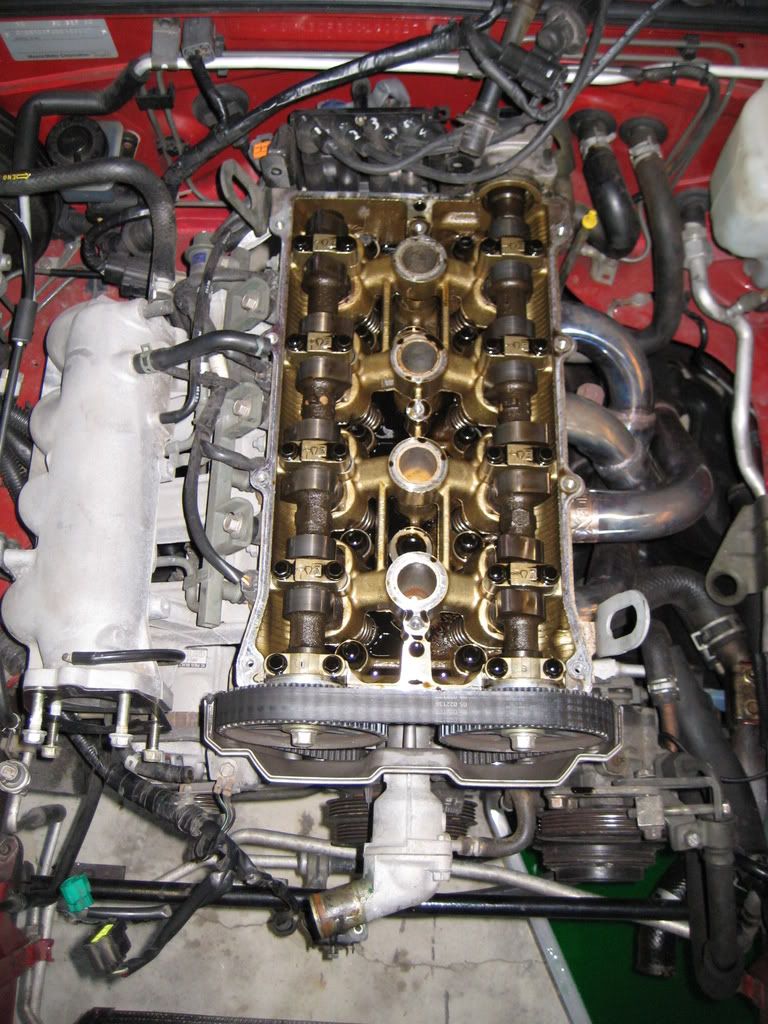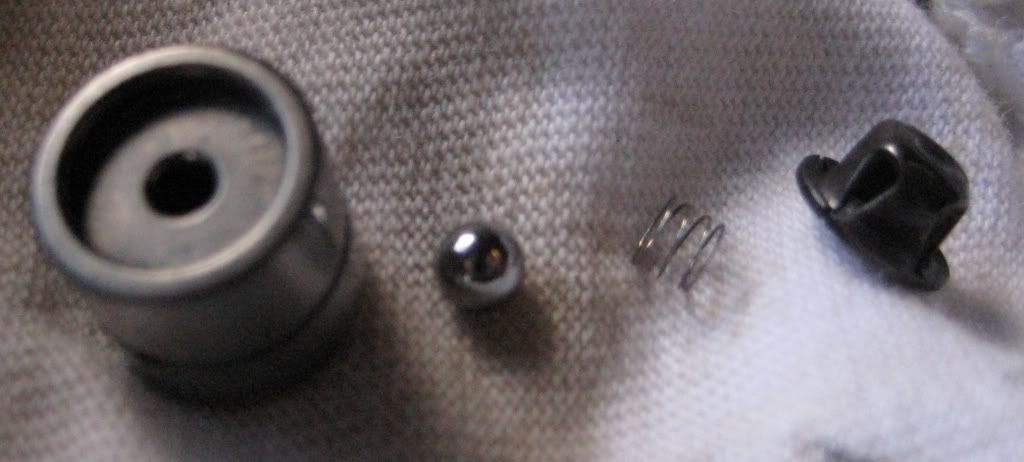I bought my car with 106,000 km on the clock and no evidence that the timing belt had ever been replaced. When started after a break or running hot at track days I sometimes get annoying amounts of noise from the Hydraulic Lash Adjusters (HLAs). Since I had to do the timing belt I thought I'd have a crack at the HLAs while I was there.
On a car I'd previously owned I had had huge success curing noisy HLAs simply by cleaning them. So why not give it a try in the 5?
HLAs are basically just a piston with a check valve and a spring. The spring keeps the unit expanded under no load and the check valve is designed to keep the oil in so the unit can hold pressure. Clearances around the piston allow the oil to slowly leak down.
Being a check valve, oil goes in but doesn't come out. The small bore clearances mean that if dirty oil goes in, the dirt gets stuck inside. Thic can lead to wear that scores the bore but more often than not, it just stops the check valve from seating properly.
Off with the cams (no need to remove throttle body, I'm cleaning mine to reduce idle variations):

Then out with one HLA at a time:

THe photo above shows the HLA removed from the follower and pulled into the two major parts. The cam follower that holds it is the big bit at the right. The spring clip around the part at the left holds the HLA into the follower.
The photo below shows the middle part of the photo above with the check valve disassembled. The ball is the check valve and it seats in the inner circle on the part at the left. Before cleaning there is gunk all around this hole.

Here is what I did:
(1) Remove one cam shaft
(2) Extract one cam follower. They just lift out by hand
(3) carefully pull the HLA out of the follower using pliers (not damaging the valve contact face or bore) or by striking the bottom of the follower on the head of a rubber mallet.
(4) wash the follower thoroughly with brake cleaner, wipe dry and set aside
(5) pull the two halves of the HLA apart, not losing the spring
(6) using a scribe point, lever the check valve hat piece from the HLA, not losing the ball or tiny spring.
(7) wash all parts with brake cleaner. Be amazed at the amount of sludge that comes out!
(8) reassemble the check valve into the 1/2 HLA
(9) reassemble the two HLA halves
(10) immerse the HLA in clean engine oil
(11) using the scribe point gently press the ball in so the check valve is open.
(12) compress and release the HLA full-stroke until no air bubbles come out.
(13) immerse the follower in the same container of clean engine oil
(14) using a finger and aligning the small cross drilled hole upwards, pump oil through the follower until no air comes out
(15) with HLA and follower still in the oil, press the HLA into the follower until the valve contact surface sits below the bottom edge of the follower rim. This ensures the tiny spring clip is in place
(16) carry the container of oil with assembly to the engine and place the follower back where it came from
Repeat 15 more times
When I took out some of the followers I could compress them with my fingers about (wild guess) 1/2 a mm. Once I had cleaned out the crap they were totally rigid! No slack.
None of the HLAs I took apart (I've only done the exhauste side so far) have had any significant wear marks or scoring. This was the same with my other car. I really believe that the HLA noise is simply from the check valve not seating properly. I'll know soon enough when I get the car back together. My car has done less than 1,000 km on Mobil 1 since it's last oil change but the oil that cam out of the HLAs was BLACK. I don't think you could really expect any engine flush products to get out the crap that was inside the HLAs.
I hope this has been useful, especially for tight arese like myself. Comments and criticism welcome.
M










